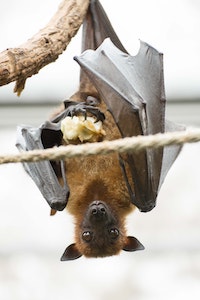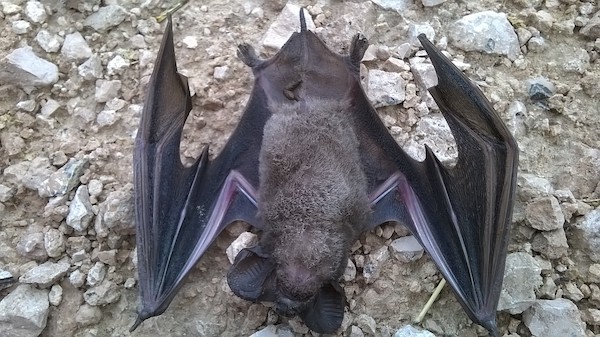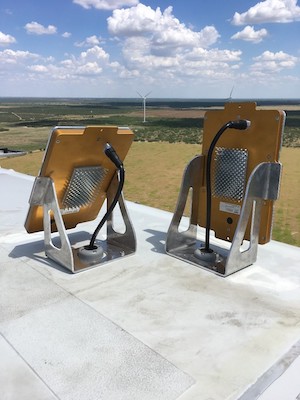Wings Battle Blades
 Evoking a range of emotions, from awe and wonder to misunderstanding that can lead to fear, bats are fundamental to our environment. In fact, according to studies noted by the U.S. Geological Survey, the value of bats in the U.S. is estimated to be "worth over $3.7 billion per year, and possibly as much as $53 billion. This value does not, however, take into account the volume of insects eaten by bats in forest ecosystems and the degree to which that benefits industries like lumber. It also doesn't take into account the critical importance of bats as plant and crop pollinators. So the actual monetary worth of bats is far greater than $3.7 billion per year."
Evoking a range of emotions, from awe and wonder to misunderstanding that can lead to fear, bats are fundamental to our environment. In fact, according to studies noted by the U.S. Geological Survey, the value of bats in the U.S. is estimated to be "worth over $3.7 billion per year, and possibly as much as $53 billion. This value does not, however, take into account the volume of insects eaten by bats in forest ecosystems and the degree to which that benefits industries like lumber. It also doesn't take into account the critical importance of bats as plant and crop pollinators. So the actual monetary worth of bats is far greater than $3.7 billion per year."
As the global human population continues to grow, so too will our energy demand. How we satisfy that demand will greatly affect the global bat population. Traditional sources of energy, such as oil & gas, as well as coal can already have negative impacts on the environment - notably pollution and contributing to climate change. The increasing need for renewable and more environmentally friendly energy resources, such as solar and wind farms, means that those installations are creeping further and further into wildlife habitats.

An especially glaring and distressing unintended consequence of wind energy development has been bat fatalities at wind turbines.
Bats are primarily killed by wind turbines when struck by the rotating blades during nights of low wind speed. Impacts to certain bat species, such as the hoary bat, are of great concern because they are unmatched by any other human caused sources of direct mortality. Bats are a vital component of our ecosystem. Every bat matters. The United States is home to dozens of species of bats that feed exclusively on insects. The loss of one or two bats may not seem like a big deal, but when you consider that the northeast part of the country has lost a million of these animals - that translates into around 1,000 metric tons of insects left alive to damage crops like cotton and corn. In turn, the agricultural industry loses their source of free pest control and, along with a potentially heavier reliance on artificial means of keeping our food supply safe, higher costs are passed on to the consumer. Additionally, while many of other species are pollinators and seed dispersers, they also serve as important prey for animals such as owls and hawks.
The wind energy industry recognizes the importance of these unique animals (the only mammals that can fly!) and have been working towards finding solutions. Currently, the most common way to reduce fatalities is curtailment of wind turbines on low wind speed nights, when bat fatalities are at the peak in summer and fall. Unfortunately, this also lowers energy outputs, which means non-renewable energy sources must pick up that slack, reducing the benefits of wind energy towards slowing clima te change. Because of this, researchers and industry have been looking for solutions that will allow for wind turbines to function normally. Ultrasonic acoustic deterrents - devices that project frequencies of ultrasound within the hearing range of bats to make the air space around a wind turbine uncomfortable - have become the focus of these efforts and offer promising results.
te change. Because of this, researchers and industry have been looking for solutions that will allow for wind turbines to function normally. Ultrasonic acoustic deterrents - devices that project frequencies of ultrasound within the hearing range of bats to make the air space around a wind turbine uncomfortable - have become the focus of these efforts and offer promising results.
Many bats navigate using echolocation, emitting high frequency sound waves that bounce off obstacles helping them "see" their surroundings. The frequencies of these sound waves vary among different bat species. A frequency "jammer" mounted on a nacelle might steer certain species away from danger, but not others. This necessitates an extra effort on our part to learn the different languages bats use so that we can effectively warn tthem and protect them from harm.
A recent study found an ultrasonic acoustic deterrent significantly reduced fatalities of the Brazilian free-tailed bat by 54 percent on average, and by 78 percent for hoary bats. However, it wasn't effective enough/able to deter all species. To help solve this information gap, the U.S. Department of Energy's Wind Energy Technology Office is funding a project to learn why we see differences in effectiveness among species. The goal of this effort is to improve the design to be more effective. If successful, this technology could become a new solution the wind energy industry, and bats, have been looking for.

Dr. Sara Weaver is Senior Ecologist and Project Manager at Bowman Consulting, which provides environmental services such as planning, compliance, and permitting. Bowman has developed or contributed to numerous regional habitat conservation plans (HCPs), statewide parks planning assessments, and endangered species research, planning, and compliance projects. Dr. Weaver can be reached at [email protected].
Bowman | bowman.com
Author: Dr. Sara Weaver
Volume: 2021 March/April











